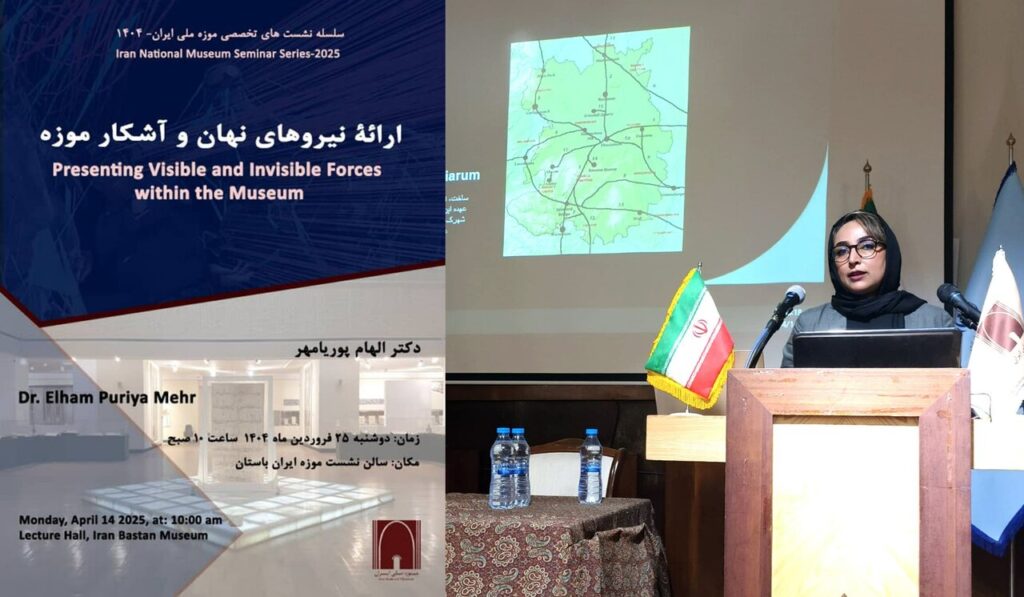Tehran – A specialist session entitled “presenting an invisible military force within a museum” took place on Monday at the National Museum of Iran, focusing on the evolving role of museums in modern society.
Keynote speaker Dr. Elham Pouria Mer gave a lecture on how museums contribute to the production of knowledge, fostering a participatory environment for viewers, and revealing both the visible and hidden powers that shape the museum experience.
In her speech, Pouria Mehr provided a historical overview of the concepts of curators and curatorial practice, tracking evolution and structural changes in the field of museums. She highlighted the role of curators not only as managers of culture and arts, but also as active agents in healing and interpreting cultural narratives.
The session was held at the Iranbastan Museum, located within the renowned museum in downtown Tehran, and was part of an ongoing effort to attract experts and scholars to critical discussions about the transformative function of contemporary museums.
Using contemporary museum theory, speakers have shaped museum-based knowledge and criticised the policy of expression and display methods in examining its impact on audience perception.
Their role in shaping the visible and invisible military within the museum and the future was another important focus of the lecture. Pouria Mehr attempted to analyse the importance of events as a dynamic tool in the museum, and unravel the forces working in museum objects, exhibition policies, spatial design, and conveying meaning to the audience.
In conclusion, by referring to successful examples of contemporary museums, this session highlighted the need to redefine the role of historical museums in imagining the future. The event provided an opportunity to rethink the museum’s cultural, educational and social functions.
At the end of the session, Dr. Jebrael Nokandeh, director of the Iranian National Museum, praised Pouria Mehr’s lecture and emphasized the importance of integrating new perspectives into the museum.
Nokandeh states that expresses his hopes for a more specialized session on the basic concept of museums and the role of museums in the contemporary world:
“Museums are not merely a repository of historical artefacts, but rather dynamic institutions that can play a pivotal role in shaping future cultural and social discourse.”
Founded in downtown Tehran in 1937, the Iranian National Museum is the country’s leading museum and important institution for preserving and presenting Iran’s archaeological and cultural heritage. The museum has a diverse collection of artifacts ranging from prehistoric to Islamic times, including valuable works such as ancient pottery, textiles and coins. As a centre of research and education, the National Museum plays an important role in understanding Iran’s rich history and connections with other cultures, particularly through important collections such as Chinese pottery, which emphasize interactions along the Silk Road.
morning

